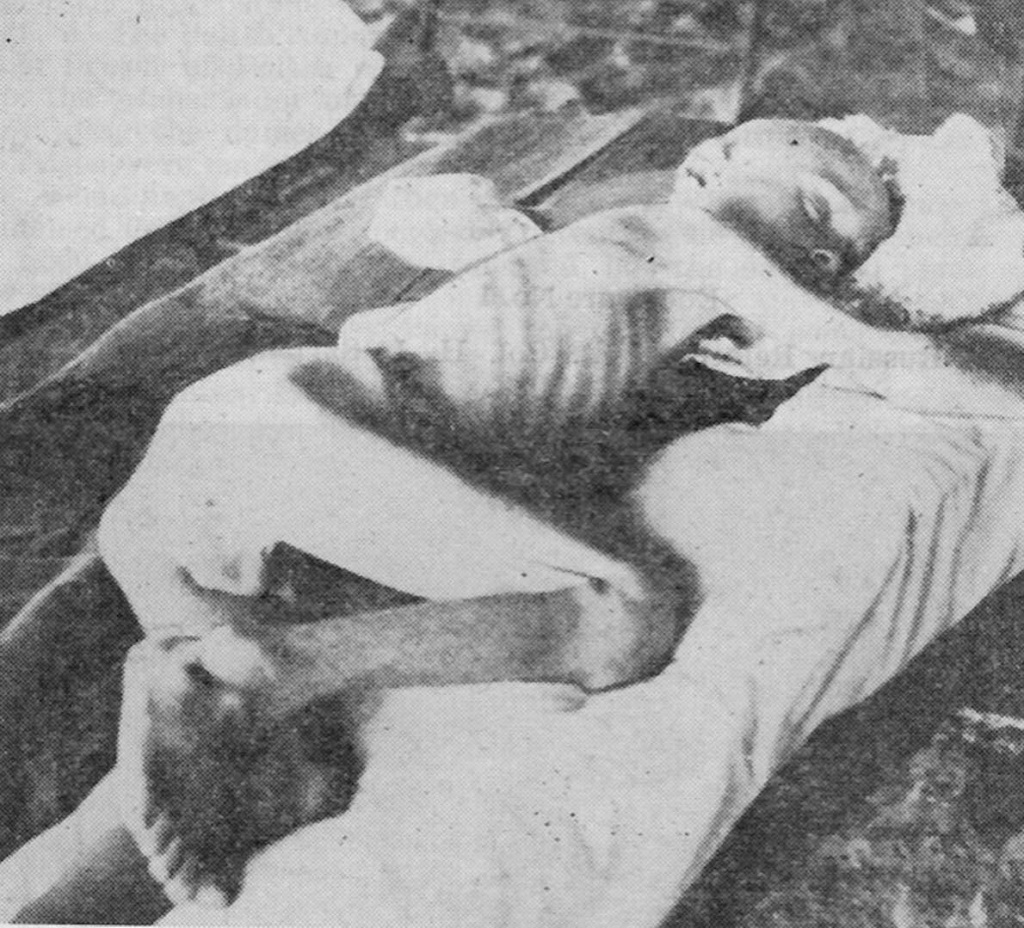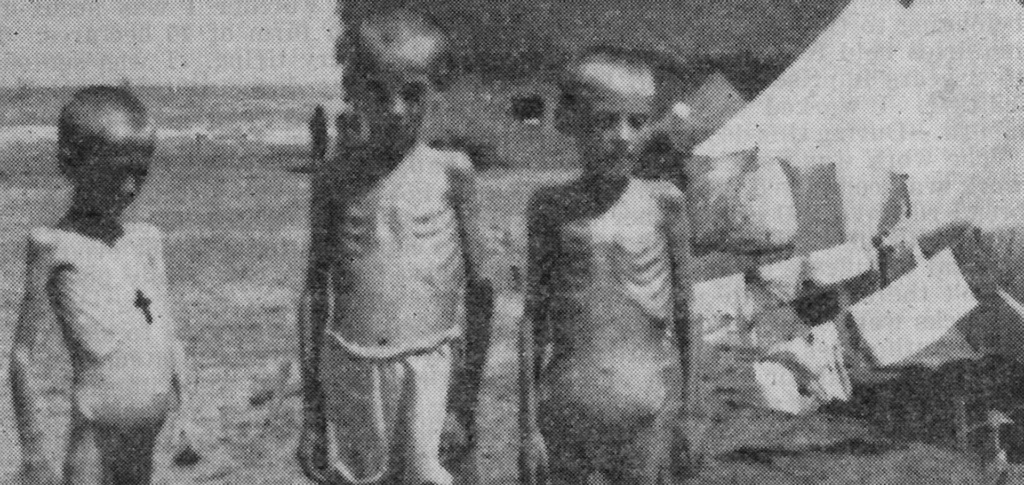This photo taken in August 1942 in Iran by U.S. Army Lieutenant Colonel Henry I. Szymanski, showing Polish refugees from Russia — three sisters, ages 7, 8, and 9 — was classified as secret by the U.S. Government and was not declassified until 1952.
Lieutenant Colonel Henry I. Szymanski was a U.S. Army Liaison Officer to the Polish Army created under the command of General Władysław Anders during the Second World War II which fought the Germans alongside American and British troops in North Africa and Italy. On November 22, 1942, Lt. Col. Szymanski sent a report on Polish-Russian relations to the Military Intelligence Division, War Department General Staff (G-2), in Washington, DC.
In August 1942, he saw and took photos of many starved and dying Polish refugees, including children, who had been evacuated with the Anders Army from Soviet Russia to Iran. In his lengthy report, he made several observations about the deplorable condition of former Polish prisoners and slave laborers who had managed to escape from the Soviet Union.
This part of Lt. Col. Szymanski’s report describes not the camps in Iran but the Gulag labor camps in Soviet Russia.
9. Quarters were overcrowded, sleeping was on the floor or ground, there was either no heat or very little, and no sanitary conditions were provided. Rats had the play of all dwellings. The sick were not isolated and medicines were not available. Because of the lack of vitamins, scurvy, beriberi, and many other diseases were prevalent. Night blindness and loss of memory resulted from the same causes. The condition of the teeth of all Poles is very bad. This is also due to lack of vitamins. Pictures taken by me in Pahlevi indicate the privations that these people had to undergo in the land of the Soviets.
10. The children had no chance. It is estimated that 50% have already died from malnutrition. The other 50% will die unless evacuated to a land where American help can reach them. A visit to any of the hospitals in Tehran will testify to this statement. They are filled with children and adults who would be better off not to have survived the ordeal.
11. Women not accustomed to hard manual labor and consequently not able to earn enough for their daily bread had a choice of starving to death or submitting to the Bolshevik or Mongol supervisor. In one sense their condition was bettered–they had something to eat. When asked by me whether they worked hard, a reluctant answer of, “I wanted to live,” would be given [to] me. The Polish military medical authorities are taking blood tests to determine the number of generals among women. The tests were not completed prior to my departure, but the results will be handed [to] me.
- Source: The Katyn Forest Massacre: Hearings Before The Select Committee to Conduct An Investigation on The Facts, Evidence and Circumstances of the Katyn Forest Massacre; Eighty-Second Congress, Second Session On Investigation of The Murder of Thousands of Polish Officers in The Katyn Forest Near Smolensk, Russia; Part 3 (Chicago, Ill.); March 13 and 14, 1952 (Washington: United States Government Printing Office, 1952), pp. 455.
- Link
To protect Stalin and the anti-Germany military alliance with Moscow, pro-Soviet propagandists in President Franklin D. Roosevelt’s administration did not publish photos of Polish children who were starved, ill and near death when they were evacuated from Soviet Russia to Iran in 1942. Likewise, OWI’s Voice of America (VOA) radio broadcasts did not mention Soviet executions of Polish prisoners of war and mistreatment of Polish deportees, including women and children, in the Soviet Gulag camps and collective farms, to which they had been sent as slave laborers. VOA’s radio broadcasts for foreign audiences and a broadcast by OWI Director Elmer Davis targeting Americans also spread Soviet propaganda lies about the mass executions of Polish prisoners in Soviet Russia known collectively as the Katyń Forest massacre. Americans and foreigners alike were misled by Roosevelt administration’s propaganda about the true nature of Stalin and the Soviet regime — a point highlighted in bipartisan criticism after the war.
Photos by Lt. Col. Henry I. Szymanski, U.S. Army
- Twelve-year-old boy, Polish evacuee from Russia, August 1942
- Six-year-old boy, Polish evacuee from Russia, August 1942
- Three sisters, ages 7, 8, and 9, Polish evacuees from Russia, August 1942
- Photos by: Lieutenant Colonel Henry I. Szymanski, U.S. Army
- Source: The Katyn Forest Massacre: Hearings Before The Select Committee to Conduct An Investigation on The Facts, Evidence and Circumstances of the Katyn Forest Massacre; Eighty-Second Congress, Second Session On Investigation of The Murder of Thousands of Polish Officers in The Katyn Forest Near Smolensk, Russia; Part 3 (Chicago, Ill.); March 13 and 14, 1952 (Washington: United States Government Printing Office, 1952), pp. 459-461.
- Link




